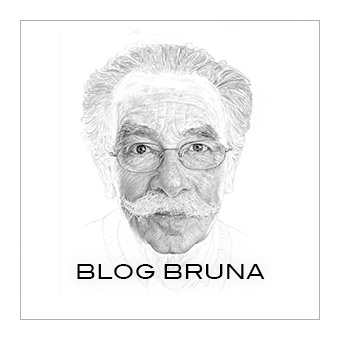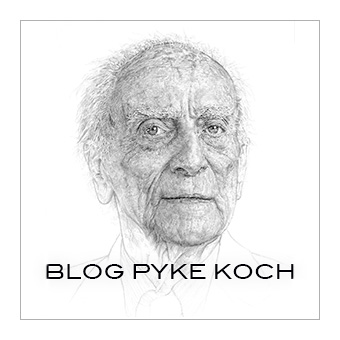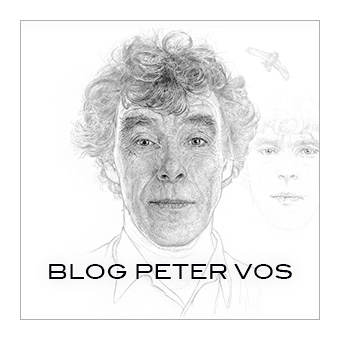Blog about the drawing of five portraits commissioned by Centraal Museum Utrecht.
Part I. Dick Bruna, creator of miffy
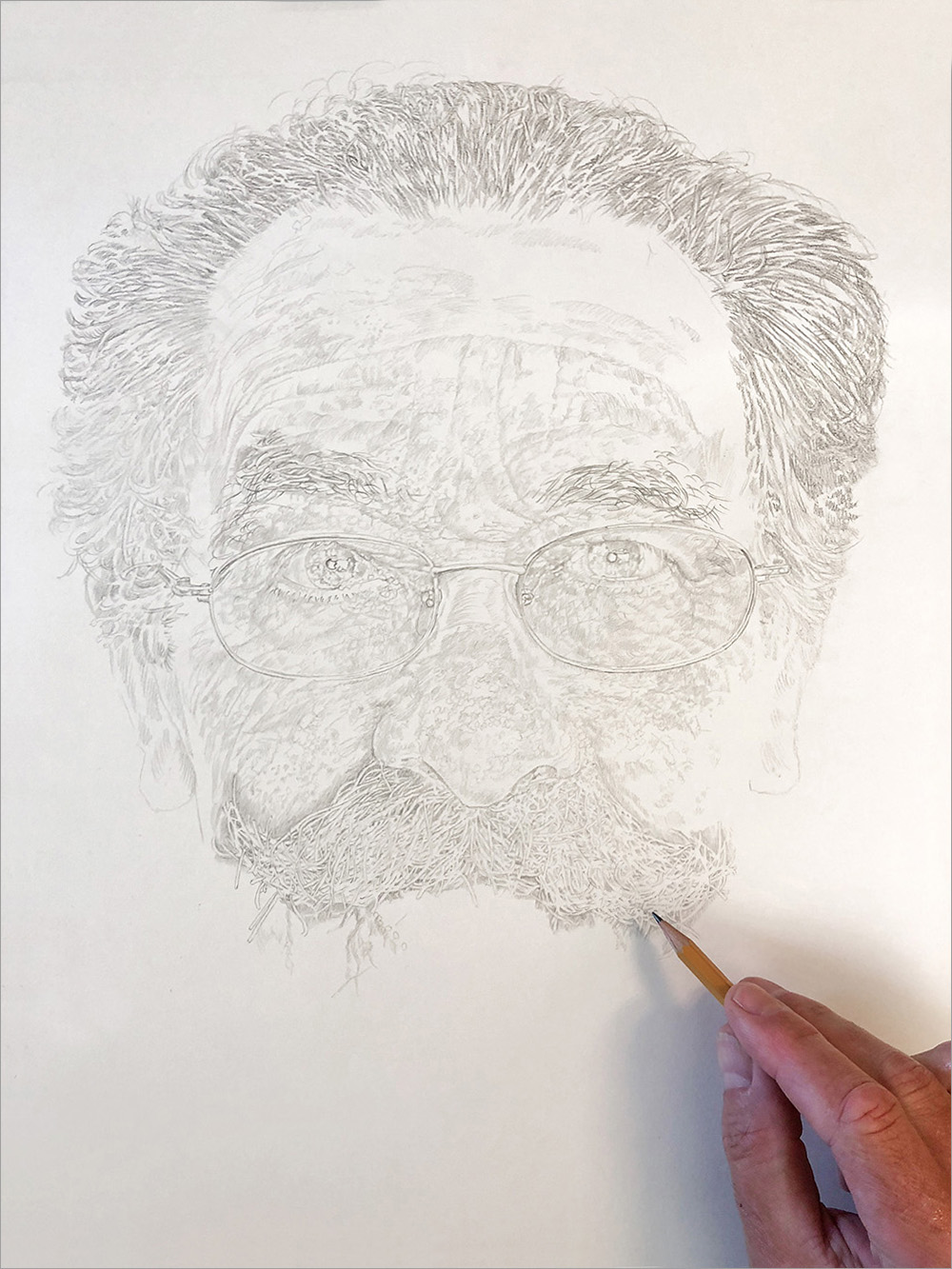
Drawing the 'map'
“The portrait I do best is of the person I know best”.
- Felix Nadar -
The fantastic portrait photographer Nazar said it well. And I also need to know someone a little before I can make a good portrait. I need something immaterial. I call that my "inner image" of someone. That may sound a bit floaty, but it doesn't feel that way: a more abstract form, a glow, a feeling. As you have for someone you know well: a father, a sister, a friend. During the drawing process I hold on to that feeling, and I always ask myself: is this him / her, does this match my image with that person? That is, in addition to the map of a face, leading in which choices I make. What do I leave out, what is not entirely in keeping with the image, what needs more attention?
If I want to tell something about my portrait, I must first tell what my inner image of Dick Bruna is based on.
Well, first of all, he is the only one of the 'big five' that I am lucky enough to have experienced extensively in real life .
Almost every morning he came, just like me, to drink a cappuccino at eight o'clock in the morning in Café Orloff on the Wed. We occasionally had a chat.
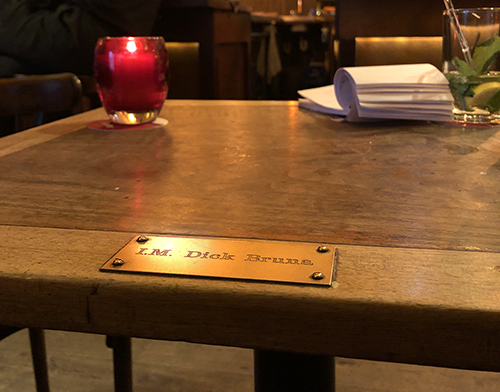
The plate of honor on the table in Cafe Orloff where Dick drank a cappuccino every early morning.
The one led to the other and so we made an appointment over time in his studio in the Jerusalem street. I would bring a cake, he would take care of the coffee. That became the first of several nice encounters in which I got to know Dick as a calm, precise and friendly man. I sometimes showed him new portraits, such as those I made weekly for Het Utrechts Nieuwsblad. He, in turn, had covered his desk with a newspaper or a large piece of paper. Not that he didn't want to talk about his work, but a work that was still in the making was only for his eyes. Before it was finished, he didn't want any influences from other viewers, viewers.
After my series (85!) of drawings for the UN, the newspaper became part of the Algemeen Dagblad, with a tabloid format. My series stopped there.
Because I noticed that the people portrayed often talked to me more freely than with a journalist, I thought it would be an interesting experiment to offer the combination of a portrait with an interview to various magazines. I then made a test interview and portrait, I think with Utrecht poet Ingmar Heytze. The magazine ZIN did see some light in it, and so the possibility was born to make a series of twelve interviews with a portrait in one year. The series was called 'Was getekend'. Of course, one of the first people I thought of was Dick Bruna. After seeing the test interview and portrait with Heytze, he agreed to my pleasure. That resulted in my first portrait of Bruna.
In addition to what I experienced in Dick's daily life, the answers in the interview also illustrate who he was. A few (unpublished) examples.
From the interview, 2005:
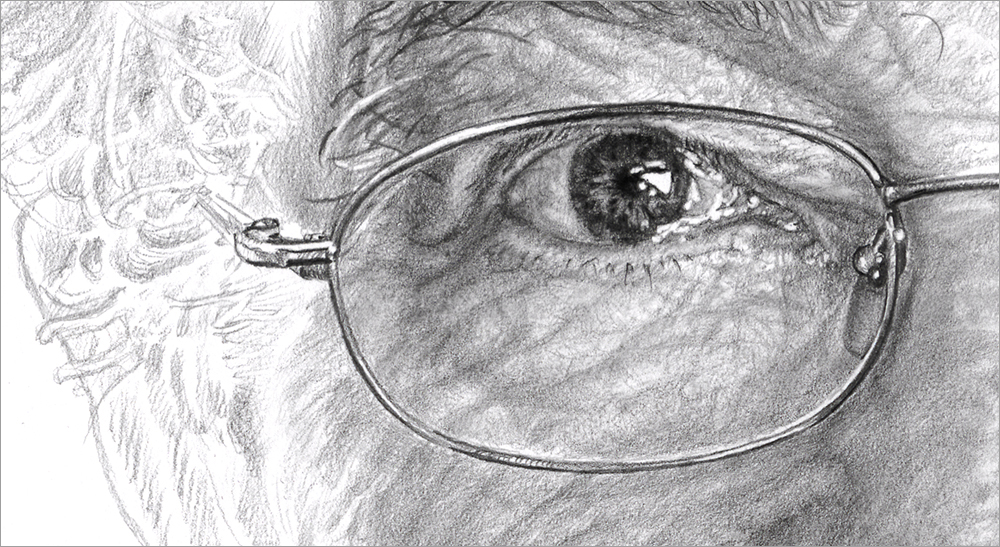
Dick:
What I've always found beautiful: Chaplin.
Which part of Chaplin do you associate yourself with?
'Those stories such as' Modern Times'. Where he really goes for it with those modern times, with that screwing. I do remember that in a factory he is over some wheel and is going to join in completely with all those people who are working on assembly line work. I think that's done incredibly nicely. And so he had other things: at some point you see him standing in a little house, on the side of a mountain. Then he walks in a direction and then you see that little house sideways. And that is so exciting. I think it is because of the search for simplicity, with very few resources. That's how you get such an enormous tension. A film has been made about one of my booklets. I found one of the
best things to make a little man walk on a rope. And then at some point, when he's in the middle of it, you let him shoot next to it. Your heart stands still at that moment. Those very small things are very appealing to me. "
Which writer can you identify with?
'Yes, I find that difficult, I have known a lot of writers because of the covers I made. But if I had to choose, it would be Simenon. If you have read two pages at Simenon, you are completely in that atmosphere. Not only in Paris but also in the rain or snow or something like that, you had it all, on the second page already. I always find that incredibly clever. "
(In the middle of the interview the phone rings and I get a picture from Dick that otherwise I would not have noticed)
Yes, with Bruna? ... Yes, ah hello. Tell me ......
Yes, I remember that very well.
Ah, well ... I don't think that's such a good idea. No sorry.
(Here Dick stays silent for a long time.)
No, I don't think that is such a good idea either. No, it is not. Day!
No, good afternoon ... bye! Bye!
What was that about?
Well, this was something I made for a good cause. I was happy to work on that at the time, but now they asked if they can change it in any way, something that makes it suitable for Christmas. They shouldn't be messing around with it, I don't want that.
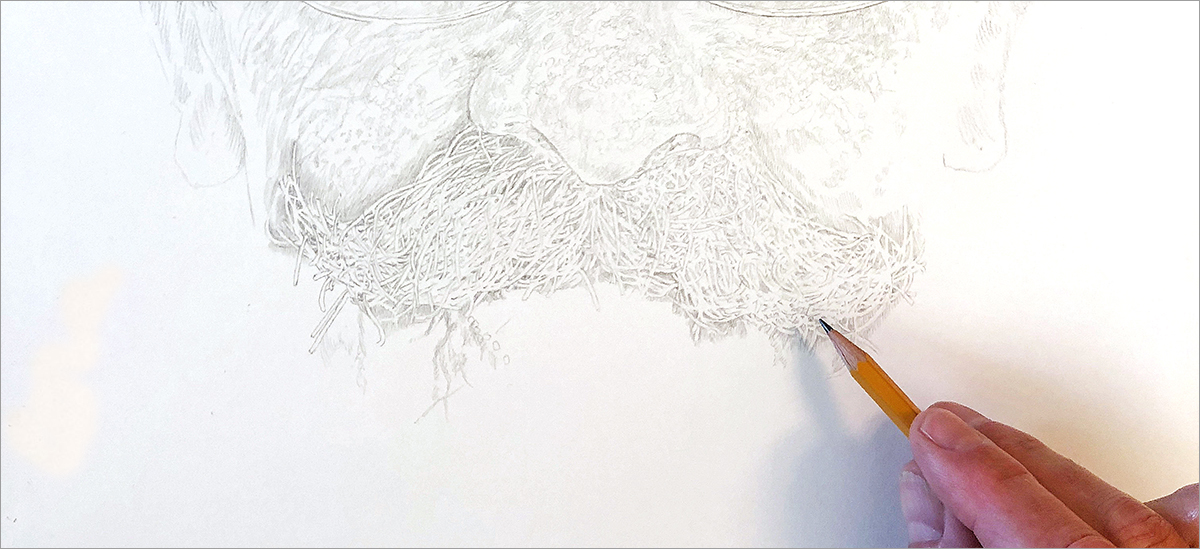
Later in the interview something typical about chaos and order.
Dick:
Yes. I know that I am constantly cleaning up. By the time I grew up. We were very concerned with straightening everything out. One of my best friends has been Pieter Brattinga, who is no longer alive. He was also always busy in the square and always straightening things out.
I have that very strong. Even when I get home and there has been someone to clean things up, and all the statues and books are crooked. Then I am very busy putting things in order. I also have it here: I can make terrible mess when I'm busy. And then at a certain moment that flows into my head and then I want to immediately organize it again. Ensure that the weather is clean and that everything is straight.
And is that something of a generation, do you think or is it something personal?
'I think it's something of the generation, because people like Rietveld, of course, had that right. People such as Sandberg and Mondriaan, all kinds of designers from the style period. If I sit with you and I see a list hanging crooked, that annoys me. Then I think I'll get up and hang things up for a little while. "
Where does that justice come from?
"I think it's in myself. I notice it in the work too. Whatever I do, whether I am making a cover, a poster, a Christmas card or working on a children's book: I am always organizing. I don't think I am an illustrator at all, I could not make a portrait of you, I am not such a draftsman. If I had to draw you, it would become a form. I would try to leave a lot of room around it for your own imagination. I therefore feel much more like a graphic designer or graphic designer than a painter, draftsman or illustrator.
That ordering has always been in my mind. With those covers too, then I saw the covers of people from abroad and I thought to myself: what a shame that they have not taken into account that there must also be a text in it, because it must be in balance. Then make it a bit simpler, but leave space for that text.
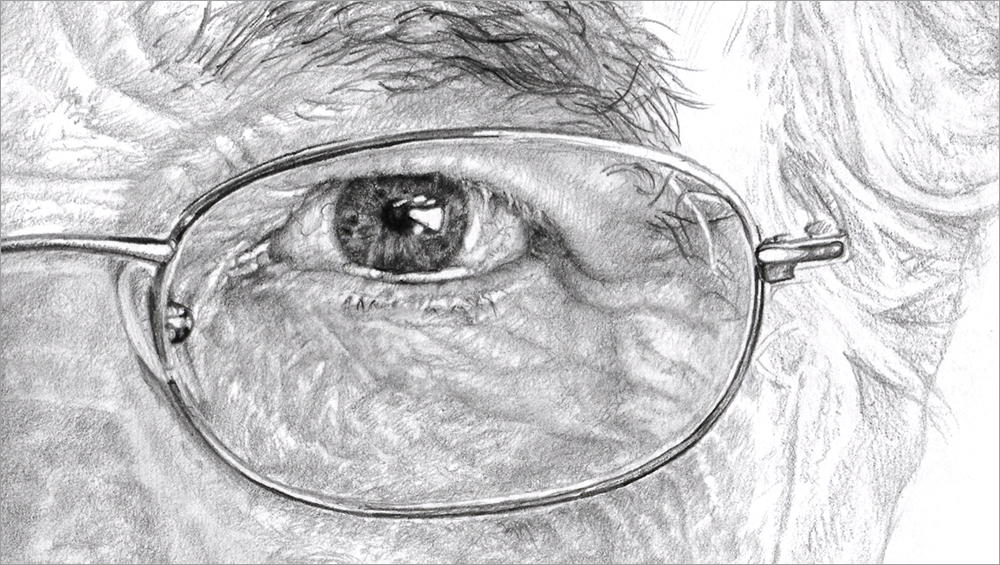
Friendly decidability
Something I have always remembered from this interview with Dick: it is important how you think about where a boundary lies, how important it is to keep your work clear, and how you can still indicate that boundary in a friendly way, can say no. Can say: "I don't think that's such a good idea. "
And if you think about it carefully, you can see it reflected in the brushed black contours of all his figures in Miffy: not a tight hard line, but a very clear one. Gentle, but determined.
When Dick had later stopped working and enjoyed his peace at home with his wife, I visited a few more times. He often sat on his bench at the Krommerijn. I usually had some new work with me in addition to the traditional cake.
He looked just as carefully as before, for example, at some of the city photos I had taken. His visual gaze, his friendly enthusiasm, had not left him, despite his old age.
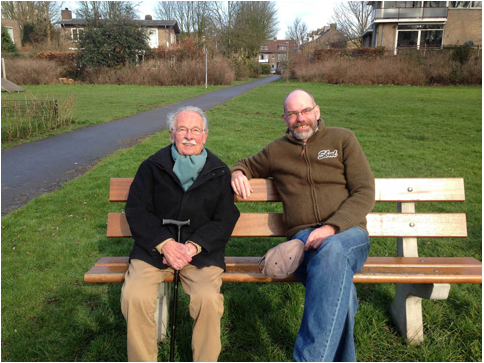
And now? Now I miss him.
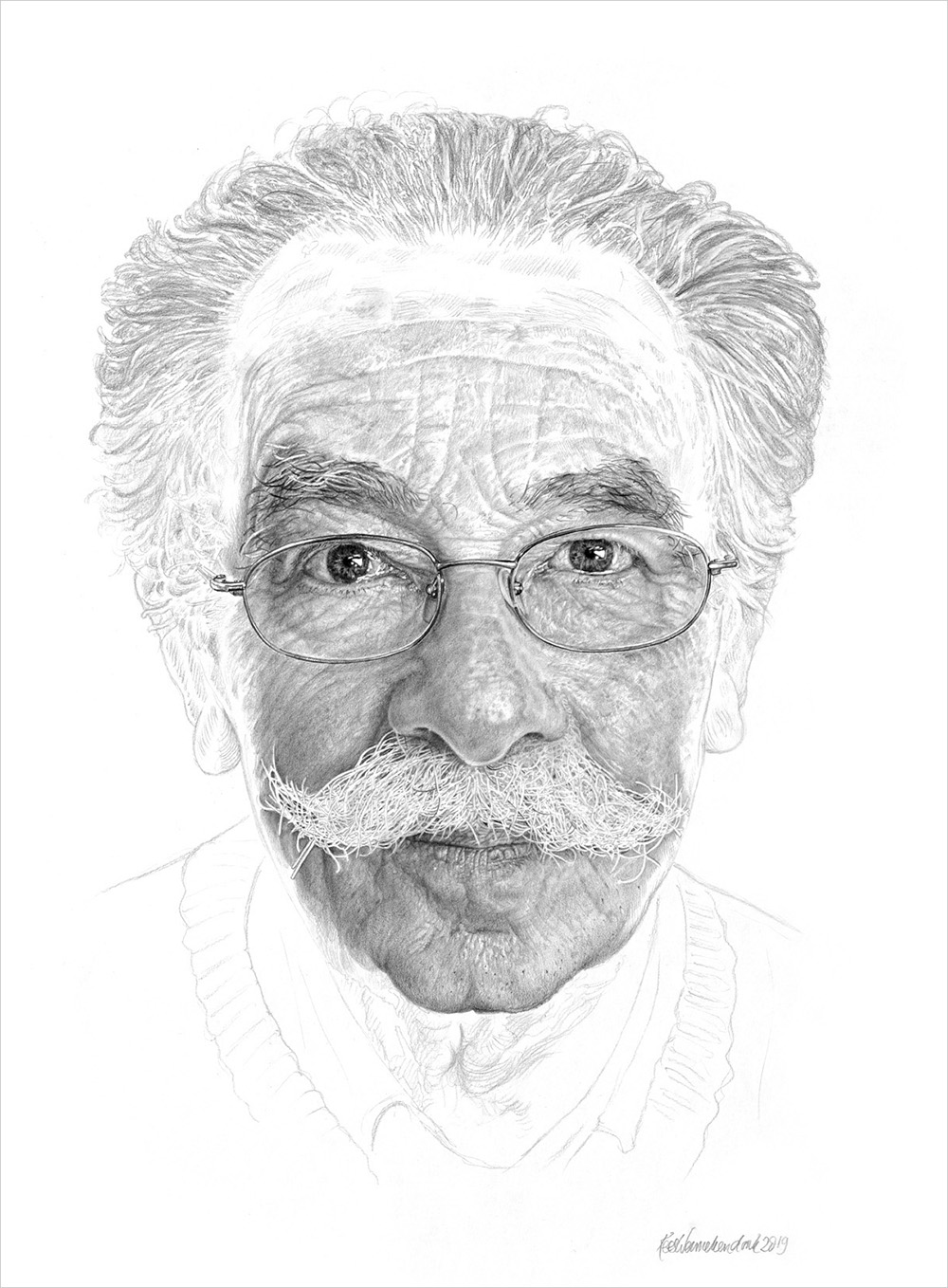
In the new portrait that I made of him, I hope to show more of my view of him. In the first portrait from 2005 he looks mainly friendly and interested, now it is more precise, detailed, more elaborate. With more from how I got to know him. More Dick, I hope.
And somewhere in the portrait I hid Miffy. His creation, which he worked on for a long time with incredible dedication and precision.

Kees Wennekendonk
Utrecht, October 31, 2019.
On display until july 12th 2020 in the Centraal Museum Utrecht, alongside my new portraits of Pyke Koch, Peter Vos, Joop Moesman and Gerrit Rietveld .
Expo 6, 1st floor.

